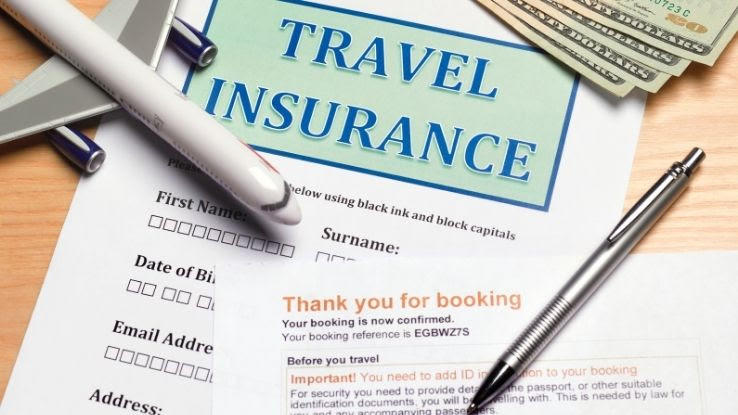The Facts About Pacific Prime Revealed
Wiki Article
Some Of Pacific Prime
Table of ContentsSome Of Pacific PrimeFacts About Pacific Prime RevealedPacific Prime - QuestionsNot known Factual Statements About Pacific Prime Fascination About Pacific Prime

This is since the information were collected for a period of solid financial performance. Of the estimated 42 million people that were without insurance, almost regarding 420,000 (concerning 1 percent) were under 65 years of age, the age at which most Americans end up being qualified for Medicare; 32 million were grownups in between ages 18 and 65, about 19 percent of all adults in this age; and 10 million were children under 18 years of age, concerning 13.9 percent of all youngsters (Mills, 2000).
These estimates of the number of individuals without insurance are created from the yearly March Supplement to the Current Population Survey (CPS), performed by the Demographics Bureau. Unless otherwise noted, nationwide estimates of people without medical insurance and percentages of the populace with various kinds of coverage are based on the CPS, the most commonly utilized source of quotes of insurance policy coverage and uninsurance rates.
Little Known Facts About Pacific Prime.

Still, the CPS is specifically useful since it creates annual estimates reasonably quickly, reporting the previous year's insurance policy protection estimates each September, and because it is the basis for a regular collection of estimates for more than two decades, enabling analysis of patterns in insurance coverage gradually. For these factors, in addition to the substantial usage of the CPS in various other researches of insurance policy protection that exist in this record, we count on CPS price quotes, with restrictions noted.

The quote of the number of without insurance individuals expands when a populace's insurance coverage standing is tracked for numerous years. Over a three-year period starting early in 1993, 72 million people, 29 percent of the united state populace, were without coverage for at least one month. Within a solitary year (1994 ), 53 million people experienced a minimum of a month without coverage (Bennefield, 1998a)
6 out of every ten uninsured grownups are themselves used. Working does boost the likelihood that one and one's household members will certainly have insurance, it is not a warranty. Even participants of families with two permanent breadwinner have nearly a one-in-ten possibility of being without insurance (9.1 percent without insurance rate) (Hoffman and Pohl, 2000).
Rumored Buzz on Pacific Prime
New immigrants make up a significant proportion of individuals without medical insurance. One analysis has actually attributed a substantial portion of the current growth in the dimension of the U.S. uninsured populace to immigrants that got here in the country in between 1994 and 1998 (Camarota and Edwards, 2000). Current immigrants (those that came to the United States within the past four years) do have a high rate of being uninsured (46 percent), however they and their youngsters account for simply 6 percent of those without insurance across the country (Holahan et al., 2001).The connection between medical insurance and accessibility to care is well developed, as recorded later in this chapter. Although the relationship between medical insurance and wellness end results is neither straight nor straightforward, a comprehensive scientific and health and wellness services research study literature links medical insurance protection to enhanced access to care, better top quality, and boosted individual and population health status.
Levels of evaluation for taking a look at the impacts of uninsurance. This conversation of wellness insurance policy coverage concentrates mostly on the U.S. populace under age 65 since practically all Americans 65 and older have Medicare or various other public insurance coverage. It focuses particularly on those without any wellness insurance coverage for any size of time.
The smart Trick of Pacific Prime That Nobody is Discussing
The problems faced by the underinsured are in some aspects similar to those dealt with by the uninsured, although they are normally much less serious. group insurance plans. Uninsurance and underinsurance, however, involve distinctly various plan concerns, and the strategies for addressing them may vary. Throughout this research and the 5 records to comply with, the main emphasis gets on persons without medical insurance and therefore no help in paying for health treatment past what is offered through charity and safeguard organizations
Wellness insurance coverage is a powerful factor influencing receipt of visit our website treatment due to the fact that both individuals and doctors respond to the out-of-pocket rate of solutions - https://on.soundcloud.com/Boznd6XKBGjyrspT8. Wellness insurance policy, nevertheless, is neither necessary nor adequate to get to medical solutions. Nevertheless, the independent and direct effect of medical insurance protection on access to health solutions is well established.
Others will certainly obtain the wellness treatment they need also without health insurance policy, by paying for it expense or seeking it from companies who supply treatment cost-free or at very subsidized prices. For still others, medical insurance alone does not make certain invoice of treatment since of other nonfinancial obstacles, such as an absence of healthcare suppliers in their neighborhood, restricted access to transportation, illiteracy, or etymological and social differences.
Pacific Prime for Dummies
Official research about uninsured populations in the USA dates to the late 1920s and very early 1930s when the Board on the Price of Healthcare generated a collection of records concerning funding medical professional office check outs and hospital stays. This concern came to be significant as the varieties of clinically indigent climbed up during the Great Anxiety.Report this wiki page